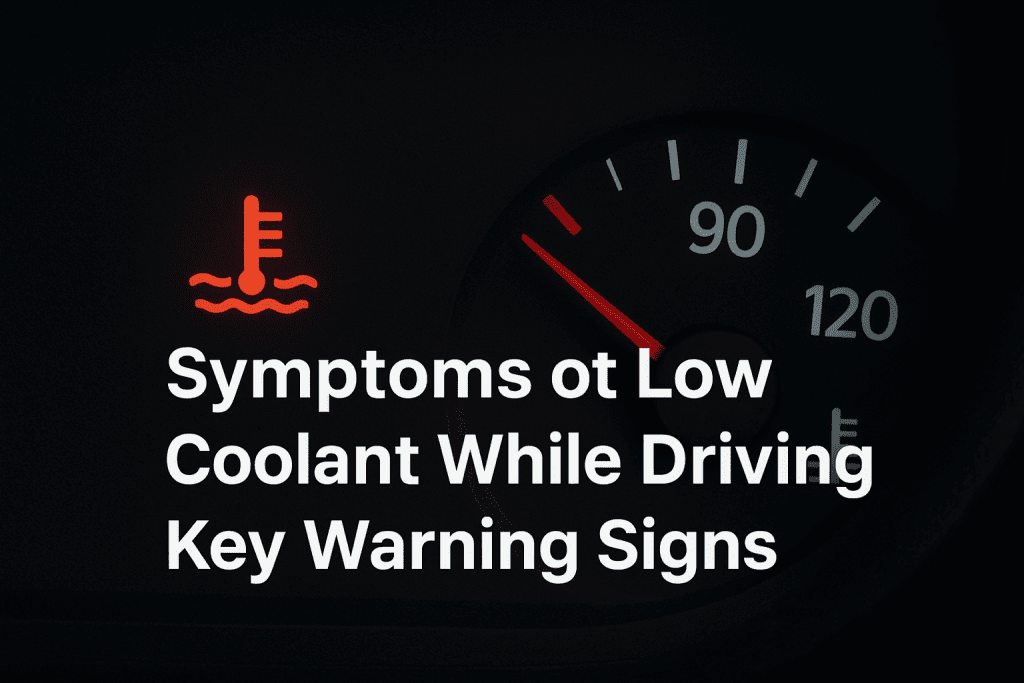
When you are driving, the last thing you want is your car engine overheating or suddenly breaking down. One of the most common causes behind such problems is low coolant in the car. Coolant (also called antifreeze) plays a vital role in maintaining engine temperature and preventing overheating. If the level drops, your vehicle can show clear symptom of low coolant in car while driving that should never be ignored.
In this detailed guide, we will explain the symptoms of low coolant in car while driving, the risks involved, how to fix the issue, and the best coolants you can use to protect your engine.
Why Coolant is Important for Your Car
Coolant circulates through the engine and radiator, absorbing excess heat and preventing the engine from overheating. It also protects against corrosion, lubricates engine parts, and ensures smooth driving performance. Without enough coolant, your car engine can overheat quickly, especially in Indian traffic and hot climate conditions.
For high-quality coolants that protect your vehicle in extreme conditions, check out Belmont Lubricants and Belmont.in — trusted manufacturers and suppliers of automotive lubricants and coolants in India.
Symptoms of Low Coolant in Car While Driving
Here are the most common warning signs you will notice if your coolant level is low:
1. Rising Temperature Gauge
If the coolant is low, the temperature gauge on your dashboard will start moving towards the red zone. This is the earliest indicator that your engine is not cooling properly.
2. Engine Overheating or Steam from the Bonnet
When coolant is low, the engine cannot dissipate heat effectively. You may see steam coming from under the bonnet while driving, especially in hot weather or traffic.
3. Heater Not Working Properly
In many cars, the heater uses engine coolant to blow warm air. If your heater suddenly starts blowing cold air, it could be a sign of low coolant levels.
4. Sweet Smell from the Engine Bay
Coolant contains glycol, which gives off a sweet smell when it leaks. If you notice this while driving, it could indicate a coolant leak and low fluid levels.
5. Dashboard Coolant Warning Light
Modern cars have sensors that detect coolant levels. If the low coolant warning light appears on your dashboard, stop and check immediately.
6. Visible Coolant Leak on the Ground
After parking, if you notice colored liquid (green, red, or orange) under your car, it’s a clear sign of coolant leakage leading to low levels.
Risks of Driving with Low Coolant
Ignoring the above symptoms can result in serious engine damage, such as:
- Engine overheating leading to breakdowns.
- Blown head gasket due to high temperature and pressure.
- Corrosion inside the engine without proper coolant protection.
- Costly repairs or even complete engine failure.
What to Do If Coolant Is Low While Driving
If you notice symptoms of low coolant while driving, here’s what you should do:
- Do not panic — safely pull over.
- Switch off the engine and allow it to cool for at least 15–20 minutes.
- Check coolant levels in the reservoir once the engine is cool.
- Top up coolant if available. Avoid using only water unless it’s an emergency.
- Visit a mechanic to check for leaks or damaged parts.
Pro Tip: Always keep a spare bottle of Belmont Engine Coolant in your vehicle for emergencies.
Best Engine Coolant Options for Cars in India

When selecting a coolant, make sure it is compatible with your car manufacturer’s specifications. Belmont offers a wide range of reliable coolants suitable for Indian conditions:
- Belmont Long-Life Coolant – ideal for modern cars and SUVs.
- Belmont Ready-to-Use Coolant – easy to top up without mixing.
- Belmont Heavy-Duty Coolant – perfect for trucks, tractors, and JCB machines.
Learn more about coolants and related products at Belmont Lubricants.
Related Blogs You May Like
- Hydraulic Oil Grade 46 vs 68 – Key Differences
- Fork Oil vs Shocker Oil – What’s the Real Difference?
- How to Choose the Right UTTO Oil for Your Tractor
These resources will help you understand more about oils and lubricants for better vehicle care.
FAQs on Low Coolant in Cars
1. Can I drive with low coolant?
It is not recommended. Ignoring the symptom of low coolant in car while driving can cause your engine to overheat and lead to expensive damage.
2. How often should I check coolant levels?
At least once every month, or before long drives.
3. Can I use water instead of coolant?
Only in emergencies. Water does not protect against corrosion or boiling/freezing like proper coolant.
4. What is the difference between coolant and antifreeze?
Antifreeze is the concentrated chemical (glycol-based) that lowers freezing point. Coolant is usually a mix of antifreeze and water, ready to use.
5. Which coolant is best for cars in India?
Choose a long-life, high-performance coolant that suits Indian conditions. Belmont Coolants are a reliable choice for cars, trucks, and tractors.
Conclusion
Low coolant is one of the most common reasons for car overheating while driving. By understanding the key symptom of low coolant in car while driving, you can prevent serious engine damage and costly repairs. Always check your coolant levels regularly and choose a trusted brand like Belmont to ensure smooth driving performance in every condition.
For more details on automotive lubricants and coolants, visit www.belmontlubricants.com and www.belmont.in.
